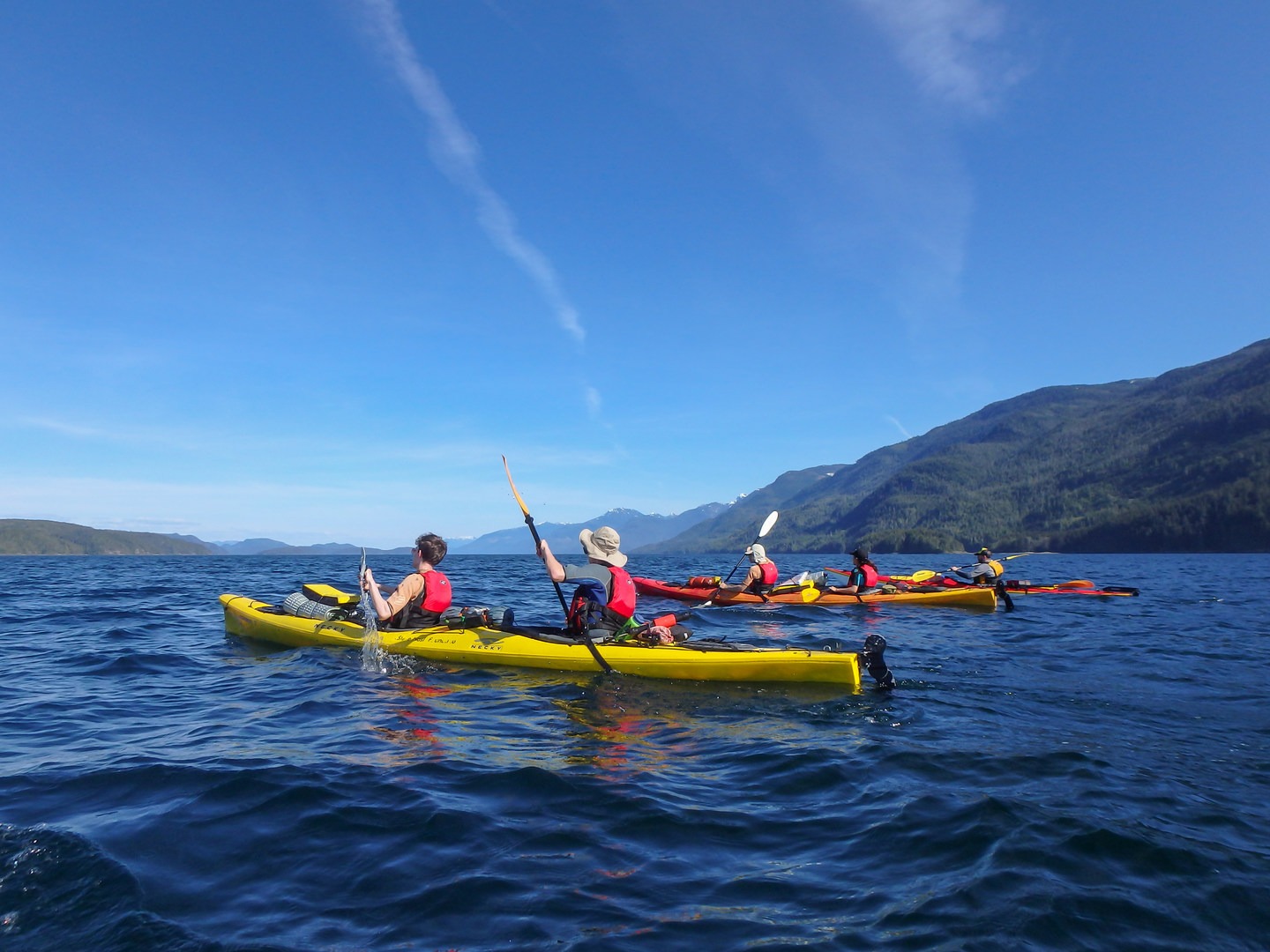You are here
In the pantheon of remarkable kayaking destinations Johnstone Strait ranks high. It is one of the more challenging locales, with it’s frequent harsh winds and powerful currents. But the combination of beautiful waters, dense islands, and vibrant marine mammals make for a unforgettable experience.
Prep
- Unlike some trips Johnstone strait requires a great deal of prep.
- Study the chart.
- Tidal reference book (or photocopies).
- Marine VHF Radio - For forecast and managing marine merchant traffic.
- 10 day forecast.
Johnstone Strait is tricky waters with strong currents, with a max current of 2.5kn. If the winds run opposite to the current meter high chop is common. In Blackney the currents get even stronger. As a consequence it’s important to be planning every move, and be very aware of what the current strength is going to be when. Apps like Navionics can be helpful, but they only give you three days in advance. Be sure to get your tide and current calculations done in advance, it will make your life much easier.
Getting to Johnstone Strait is a bit of a trek. From Vancouver take the Horseshoe bay ferry to Nanaimo. The Island highway winds north, becoming a winding mountain road past Campbell River. Follow signs for Port Hardy, or Port McNeil. As the mountains get more dramatic signs for Telegraph Cove will emerge. Follow this to the cozy little hamlet. There is ample camping here if you need to spend the night.
You can launch from a boat ramp in the cove. In the busy season a small fee may be required. The cove is narrow with loads of traffic, so it’s advisable to get out quick. Before you do though make sure to take a wander over the hill and check out conditions for yourself. The Bauza Islet have a max current of nearly 4kn, so it’s good to ensure you are launching into favorable conditions.
From here it’s most common to head for Hanson Island. Crossing the Johnstone Strait is major endeavor and most trips plan around this. Crossing has risks; getting trapped on the Northern side by strong northwest winds, and rewards; Broughton group, old village sites and more.
If you’re stuck on the South side you can paddle near, but not into, the Robson Bight, an orca habitat that is busy with a resident pod in the summer season. There are several campsite and excellent beaches here.
On the North side Hanson island is a beautiful paddle. There are numerous excellent campsite, and you often get a great deal of marine life. Paddling through Blackney Passage can be thrilling, especially if you ride the tides right.
If you make it across Blackney Passage the Broughton group has a spending offering of paddling. With that said, many don’t take any chances and hire a water taxi to and from the Broughtons to ensure they aren’t delayed by challenging conditions.
Logistics + Planning
Current Weather: Powered by Dark Sky
























Comments
Sign In and share them.